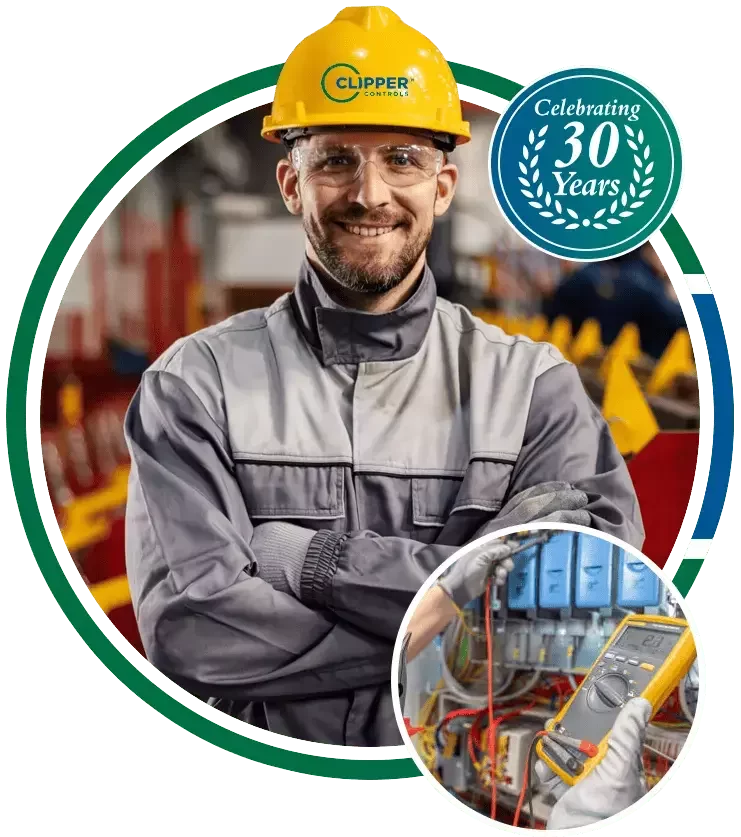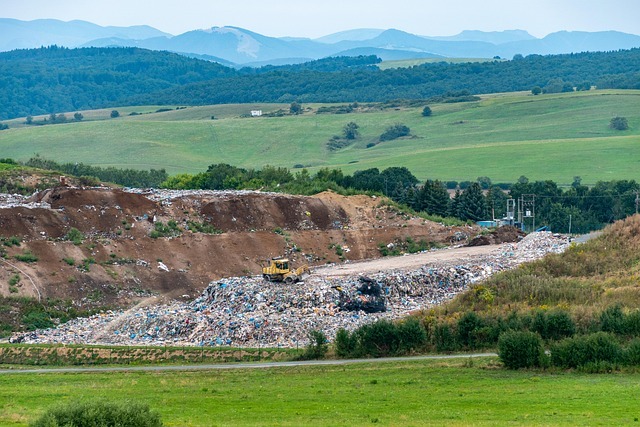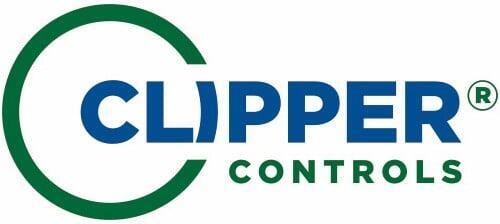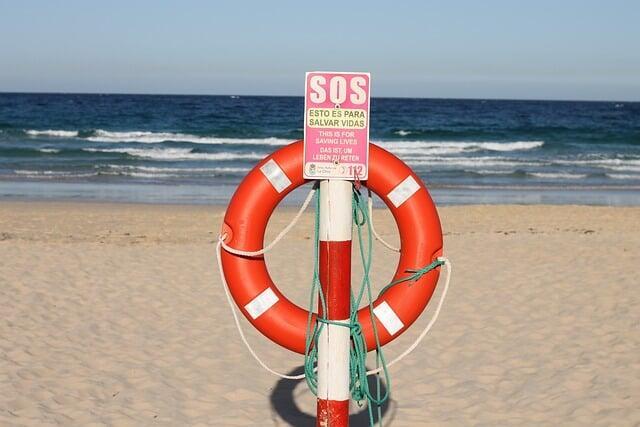Landfill Process Control Applications
Application Overview
Landfill process control applications require robust instrumentation and automation solutions to ensure efficient waste management, environmental compliance, and operational safety. Accurate monitoring of landfill gas (LFG) composition, leachate levels, and subsurface conditions is critical for optimizing gas collection, mitigating emissions, and preventing groundwater contamination. Advanced gas analyzers provide real-time data on methane, carbon dioxide, and other volatile compounds, allowing operators to fine-tune gas extraction systems and maximize energy recovery. Similarly, level and flow monitoring instrumentation for leachate management helps prevent overflow risks and ensures proper treatment processes. Reliable sensor networks and SCADA integration enhance visibility and control over these complex systems, reducing manual intervention and improving overall process efficiency.
In addition to environmental monitoring, precise control of aeration and gas flaring systems is essential to maintaining regulatory compliance and operational stability. Automated control valves, pressure transmitters, and flow meters help regulate landfill gas collection, reducing the risk of vacuum imbalances that can lead to fugitive emissions or system inefficiencies. Temperature and moisture sensors within landfill cells provide valuable data for assessing decomposition rates and optimizing landfill gas production. By leveraging real-time analytics and automated controls, landfill operators can improve sustainability, enhance energy recovery efforts, and ensure safe, compliant operations. With the right combination of instrumentation and control technologies, landfills can transition from passive waste disposal sites to actively managed energy resources.
How Our Products Support Your Industry
Clipper Controls supports the landfill industry by providing high-quality instrumentation, control systems, and analytical solutions tailored to the unique challenges of landfill process management. From landfill gas (LFG) monitoring and leachate level measurement to aeration and gas flaring control, Clipper Controls offers a range of precision-engineered sensors, transmitters, and automation solutions that enhance efficiency, safety, and regulatory compliance. By supplying advanced gas analyzers, flow meters, pressure transmitters, and SCADA integration support, Clipper Controls helps landfill operators optimize gas collection, prevent environmental contamination, and improve energy recovery efforts.
Beyond equipment supply, Clipper Controls offers expert guidance on selecting, integrating, and maintaining landfill instrumentation and controls. Our technical expertise ensures that operators have reliable, accurate, and durable measurement solutions that withstand harsh landfill conditions. With a commitment to operational efficiency and environmental responsibility, Clipper Controls partners with landfill operators to enhance process visibility, reduce downtime, and maximize the value of landfill gas recovery systems. Whether it's improving leachate management, ensuring compliance with air quality regulations, or optimizing gas-to-energy projects, Clipper Controls provides the technical solutions and industry knowledge needed for effective landfill process control.
Key Applications and Solutions
Flow Measurement & Control
Accurate flow measurement and control are essential in landfill operations to optimize landfill gas (LFG) extraction, leachate management, and flare system efficiency. Precise monitoring of gas and liquid flows helps landfill operators maximize methane recovery, prevent environmental contamination, and ensure regulatory compliance. Various flow measurement technologies, including thermal mass flow meters, ultrasonic flow meters, electromagnetic (mag) flow meters, and differential pressure flow meters, are commonly used in landfill applications. Selecting the most suitable type of flow instrumentation improves process efficiency, minimizes maintenance costs, and enhances overall system performance.
Applications of Flow Measurement in Landfill Operations
- Landfill Gas (LFG) Extraction: Thermal mass flow meters and ultrasonic flow meters are commonly used to measure methane and carbon dioxide flow rates in landfill gas recovery systems. These instruments provide accurate, real-time flow data, allowing operators to optimize gas extraction, balance vacuum pressure across wells, and maximize energy recovery.
- Leachate Collection and Pumping: Electromagnetic flow meters (mag meters) are ideal for monitoring the flow of leachate in collection systems and pumping stations. Mag meters provide non-intrusive, obstruction-free measurement with high accuracy, making them suitable for leachate’s variable composition and potential solid content.
- Flare System Control: To ensure compliance with environmental regulations, landfill gas flare systems must maintain proper combustion efficiency. Thermal mass flow meters measure the flow of landfill gas entering the flare stack, helping operators control gas flow rates and optimize combustion to reduce greenhouse gas emissions.
- Condensate Management: In landfill gas systems, condensate forms as gas cools, which can lead to blockages and system inefficiencies. Ultrasonic flow meters and vortex flow meters are commonly used for measuring condensate flow to ensure proper drainage and prevent disruptions in gas extraction.
- Stormwater and Runoff Management: Landfills must manage surface water runoff to prevent contamination. Ultrasonic and Doppler flow meters are effective for measuring open-channel stormwater flow, ensuring compliance with discharge regulations and mitigating environmental risks.
Key Purchasing Considerations
- Media Compatibility: Different flow meters are designed for specific fluids or gases. For LFG, thermal mass flow meters are ideal because they measure gas directly without requiring pressure or temperature compensation. For leachate, electromagnetic flow meters are preferred due to their ability to handle liquids with varying conductivity and suspended solids.
- Flow Range and Accuracy: Landfill gas flow rates can fluctuate significantly due to changes in decomposition rates and atmospheric pressure. Flow meters with a wide turndown ratio, such as ultrasonic and thermal mass flow meters, provide accurate readings across varying conditions.
- Environmental and Installation Conditions: Landfill environments expose flow meters to extreme temperatures, moisture, and potentially corrosive gases. Instruments with rugged, corrosion-resistant materials and IP-rated enclosures are recommended for long-term reliability.
- Integration with Control Systems: Flow meters should be compatible with SCADA and data logging systems for remote monitoring and automated process control. Devices with digital communication protocols such as Modbus, HART, or 4-20mA outputs ensure seamless integration.
- Maintenance and Longevity: Non-intrusive flow meters, such as ultrasonic and thermal mass flow meters, require minimal maintenance and eliminate the risk of clogging. In contrast, differential pressure and mechanical flow meters may require periodic cleaning and recalibration.
- Compliance with Regulatory Standards: Flow measurement instruments should meet environmental regulations governing landfill gas emissions and leachate discharge. Choosing meters that comply with EPA and local air quality requirements ensures regulatory compliance and operational integrity.
Level Measurement & Control
Effective level measurement and control in landfill operations are essential for managing leachate, optimizing landfill gas (LFG) extraction, and preventing environmental hazards. Accurate level monitoring ensures that leachate does not overflow, preventing groundwater contamination and regulatory violations. Similarly, maintaining appropriate liquid levels in landfill gas wells is crucial for optimizing gas collection and preventing blockages. To achieve reliable monitoring, landfills utilize a range of level measurement instruments, including radar level transmitters, ultrasonic sensors, float switches, and pressure transducers. These technologies provide accurate, real-time data to help operators proactively manage fluid levels, detect abnormalities, and ensure the safe and efficient operation of landfill processes.
Applications of Level Measurement in Landfill Operations
- Leachate Collection and Storage: Monitoring the level of leachate in collection sumps, tanks, and treatment facilities ensures proper containment and prevents overflow, which could lead to environmental contamination. Submersible pressure transducers and guided wave radar (GWR) level transmitters are commonly used to monitor leachate levels in sumps, tanks, and treatment facilities.
- Leachate Pumping and Treatment Systems: Maintaining optimal liquid levels in pumping systems is crucial for efficient transport to treatment facilities. Accurate level measurement prevents pump dry running and ensures proper flow rates for processing. Float switches and differential pressure sensors help control pump operation by detecting high and low levels in leachate sumps and tanks.
- Landfill Gas Wells: Monitoring liquid levels within gas wells helps prevent the accumulation of leachate, which can obstruct gas flow, reduce methane recovery efficiency, and increase system maintenance requirements. Radar level transmitters and capacitance probes are used to monitor liquid levels within landfill gas extraction wells.
- Stormwater and Runoff Management: Proper level measurement in stormwater retention ponds and drainage systems helps mitigate flooding risks and maintain compliance with discharge regulations. Ultrasonic level sensors and radar transmitters are ideal for monitoring water levels in stormwater retention ponds and drainage systems. These non-contact sensors provide accurate readings even in fluctuating environmental conditions, helping prevent flooding and ensure compliance with discharge regulations.
- Holding and Storage Tanks:Chemical treatment tanks, process water storage, and condensate collection tanks in landfill operations require level monitoring using guided wave radar, pressure sensors, or float switches to ensure safe containment and efficient operation.
Key Purchasing Considerations
- Measurement Technology Suitability: Different applications require different technologies. For example, guided wave radar is effective for leachate measurement due to its ability to function in varying temperatures and densities, while ultrasonic sensors work well for open-air water level monitoring. Understanding the advantages of each technology is critical for selecting the right solution.
- Harsh Environmental Conditions: Instruments must be durable enough to withstand landfill conditions, including exposure to methane gas, high humidity, and corrosive leachate. Radar transmitters with corrosion-resistant enclosures and IP-rated protection offer long-term reliability in these environments.
- Continuous vs. Point Level Measurement: Continuous level measurement, provided by radar and ultrasonic sensors, is ideal for applications requiring real-time monitoring. For simpler applications, point level detection using float switches or capacitance probes can trigger alarms when critical levels are reached.
- Remote Monitoring and Integration: Many landfill operators use SCADA systems for centralized data collection. Level sensors with analog (4-20mA), Modbus, or HART communication capabilities allow seamless integration with existing control systems, enabling remote monitoring and automated process control.
- Maintenance and Reliability: Non-contact sensors, such as radar and ultrasonic level transmitters, require minimal maintenance and are resistant to sensor fouling. Pressure-based sensors and float switches may require periodic cleaning but offer robust, cost-effective solutions for specific applications.
- Regulatory Compliance: Level measurement instruments should comply with landfill management regulations related to leachate storage, stormwater runoff, and gas collection. Choosing sensors that meet industry standards ensures operational integrity and environmental compliance.
Pressure Measurement & Control
Precise pressure measurement and control are crucial in landfill operations to ensure the efficient extraction of landfill gas (LFG), maintain the integrity of leachate conveyance systems, and enhance overall process safety. Proper pressure management prevents gas leaks, vacuum imbalances, and equipment failure while optimizing methane recovery and reducing greenhouse gas emissions. Instruments such as differential pressure transmitters, absolute pressure sensors, gauge pressure transducers, and barometric pressure sensors are commonly used in landfill applications to monitor and regulate pressure levels in gas collection wells, flare systems, and liquid transfer pipelines.
Applications of Pressure Measurement in Landfill Operations
- Landfill Gas Collection Wells: Differential pressure transmitters and vacuum pressure sensors are used to monitor and regulate the vacuum applied to landfill gas wells. Maintaining consistent negative pressure ensures optimal gas extraction while preventing air intrusion, which can dilute methane concentration and reduce energy recovery efficiency.
- Leachate Pumping and Conveyance: Gauge pressure transducers are installed in leachate pumps and pipelines to monitor fluid pressure, ensuring stable flow and preventing pipe bursts or pump failures due to overpressure or vacuum conditions.
- Flare System Monitoring: To comply with environmental regulations, landfill gas flare stacks require precise pressure control to ensure proper combustion efficiency. Absolute pressure transmitters help monitor gas pressure entering the flare system, maintaining stable flow for complete combustion and minimizing unburned methane emissions.
- Gas Extraction Manifold Control: Landfills often use gas manifolds to distribute collected gas to various processing points, including power generation engines or flares. Differential pressure sensors help balance gas flow across the manifold, ensuring even distribution and preventing vacuum losses.
- Subsurface Landfill Monitoring: Barometric pressure sensors are used to assess atmospheric conditions that can impact gas collection efficiency. Pressure fluctuations due to weather changes can affect landfill gas flow, and monitoring these variations helps operators adjust vacuum levels accordingly.
Key Purchasing Considerations
- Measurement Type: Different landfill systems require different types of pressure measurement. For gas collection, differential and vacuum pressure sensors are essential, while gauge and absolute pressure transmitters are needed for leachate and flare system monitoring.
- Environmental Durability: Landfill environments expose pressure sensors to methane, hydrogen sulfide, and moisture, which can cause sensor degradation. Instruments with stainless steel or corrosion-resistant enclosures and IP-rated protection are recommended for long-term durability.
- Operating Range and Accuracy: Pressure sensors should be selected based on the expected operating range, ensuring accurate readings under fluctuating landfill conditions. Sensors with high accuracy and stability help maintain optimal gas extraction and liquid transport performance.
- Integration with Control Systems: Modern landfill operations rely on SCADA and remote monitoring systems for real-time pressure control. Pressure sensors with digital communication outputs such as Modbus, HART, or 4-20mA signals enable seamless integration with existing automation systems.
- Maintenance and Calibration: Pressure sensors should have minimal maintenance requirements and long-term stability to reduce downtime. Self-calibrating or easily accessible sensors help minimize operational disruptions and ensure continuous performance.
- Regulatory Compliance: Pressure monitoring systems must adhere to environmental and safety regulations, particularly for landfill gas collection and flare operations. Selecting sensors that comply with EPA and air quality regulations ensures regulatory adherence and operational efficiency.
Temperature Measurement & Control
Temperature measurement and control play a vital role in landfill operations, impacting landfill gas (LFG) production, leachate treatment, and overall site safety. Monitoring temperature variations within a landfill provides critical insights into waste decomposition rates, gas generation efficiency, and potential fire risks. High temperatures in landfill cells can indicate excessive microbial activity or even subsurface fires, while low temperatures may signal slowed decomposition and reduced methane production. To ensure optimal operations, landfill managers use various temperature measurement instruments, including thermocouples, resistance temperature detectors (RTDs), infrared temperature sensors, and data logging probes for continuous monitoring.
Applications of Temperature Measurement in Landfill Operations
- Landfill Gas Extraction and Processing: Thermocouples and RTDs are used to monitor the temperature of landfill gas at various points in the collection system. This data helps optimize methane recovery by maintaining ideal gas temperatures for efficient extraction and processing.
- Subsurface Temperature Monitoring: Temperature probes installed at different depths within landfill cells help track microbial activity and detect potential hotspots. High temperatures can indicate anaerobic decomposition imbalances or smoldering fires, requiring immediate intervention to prevent safety hazards.
- Leachate Treatment and Storage: Temperature affects the chemical and biological processes in leachate treatment systems. RTDs and thermocouples help regulate heating and cooling processes to ensure optimal leachate treatment efficiency and prevent thermal shock to treatment microbes.
- Flare System Performance: Infrared temperature sensors and thermocouples monitor the combustion temperature in landfill gas flare stacks. Maintaining the correct flare temperature ensures complete methane combustion, reducing greenhouse gas emissions and meeting regulatory standards.
- Gas-to-Energy Systems: Many landfills convert methane into energy through combustion or cogeneration systems. Temperature sensors in heat exchangers and combustion chambers help maintain proper operating conditions, improving efficiency and prolonging equipment lifespan.
Key Purchasing Considerations
- Measurement Range and Sensitivity: Temperature variations in landfill operations can be extreme, from low ambient temperatures to high combustion temperatures in flares. Choosing sensors with an appropriate measurement range ensures accurate monitoring across all applications.
- Sensor Type and Placement: Different temperature sensors serve specific functions. Thermocouples are ideal for high-temperature applications such as flare stacks, while RTDs provide precise readings for gas processing and leachate treatment. Infrared sensors are useful for non-contact surface temperature monitoring.
- Environmental Durability: Landfill conditions expose sensors to corrosive gases, moisture, and harsh weather. Instruments with protective coatings, stainless steel housings, and IP-rated enclosures offer better durability and longevity in such environments.
- Integration with SCADA and Automation Systems: Many landfills use SCADA systems for remote monitoring and control. Temperature sensors with digital outputs such as Modbus, HART, or 4-20mA signals ensure seamless integration with existing data collection and process control systems.
- Calibration and Maintenance: Temperature sensors should require minimal recalibration to reduce maintenance downtime. Self-diagnosing sensors or those with automated calibration features help ensure continuous accuracy.
- Compliance with Safety and Environmental Regulations: Temperature monitoring is essential for regulatory compliance in landfill operations, particularly for emissions control and leachate treatment. Sensors should meet industry standards for accuracy and reliability in hazardous environments.
Gas Composition Analysis
Gas composition analysis is essential in landfill operations to monitor the concentration of methane (CH₄), carbon dioxide (CO₂), oxygen (O₂), and trace gases such as hydrogen sulfide (H₂S) and volatile organic compounds (VOCs). Accurate gas analysis ensures efficient landfill gas (LFG) extraction, optimizes energy recovery, and helps maintain compliance with air quality and emissions regulations. Landfill operators use a variety of gas analyzers, including infrared (NDIR) gas analyzers, electrochemical sensors, flame ionization detectors (FID), and gas chromatography systems. These instruments provide real-time data on gas composition, enabling precise adjustments to gas collection and processing systems.
Applications of Gas Composition Analysis in Landfill Operations
- Landfill Gas Collection and Optimization: NDIR gas analyzers and tunable diode laser (TDL) sensors measure methane and carbon dioxide levels to ensure maximum gas recovery and prevent excessive oxygen intrusion, which can lead to dangerous conditions or reduced energy efficiency.
- Emissions Compliance Monitoring: Portable and fixed gas analyzers equipped with electrochemical and infrared sensors monitor landfill emissions, ensuring compliance with Environmental Protection Agency (EPA) regulations and local air quality standards. Continuous Emissions Monitoring Systems (CEMS) are commonly used for regulatory reporting.
- Gas-to-Energy Systems: Gas composition analysis plays a critical role in landfill gas-to-energy (LFGTE) projects. Analyzers measure methane purity to determine energy production potential, while hydrogen sulfide sensors help prevent damage to gas engines and turbines by detecting corrosive compounds.
- Flare System Efficiency: Gas chromatographs and infrared gas analyzers monitor combustion efficiency in landfill flare systems. Ensuring proper methane-to-oxygen ratios helps maintain complete combustion and minimize unburned hydrocarbons and greenhouse gas emissions.
- Safety Monitoring in Landfill Cells: Oxygen and hydrogen sulfide sensors help detect hazardous gas levels in landfill environments, preventing potential explosions, toxic exposure, and subsurface fires. Gas composition data also helps landfill managers adjust gas extraction rates to avoid dangerous pressure buildup.
Key Purchasing Considerations
- Measurement Capabilities: Different analyzers specialize in detecting specific gases. NDIR analyzers are effective for CH₄ and CO₂, while electrochemical sensors are better suited for oxygen and hydrogen sulfide detection. Flame ionization detectors (FID) are used for measuring total hydrocarbons.
- Real-Time vs. Batch Sampling: Continuous gas analyzers provide real-time data and are ideal for process control and emissions monitoring, whereas batch sampling analyzers, such as gas chromatographs, provide highly detailed compositional analysis for regulatory reporting and system diagnostics.
- Environmental Durability: Landfill gas contains corrosive elements, moisture, and fluctuating temperatures. Instruments with corrosion-resistant components, heated sample lines, and automatic moisture removal systems improve reliability in harsh landfill conditions.
- Integration with SCADA and Automation Systems: Gas analyzers with digital outputs such as Modbus, HART, or 4-20mA signals allow seamless integration with landfill control and data logging systems, enabling remote monitoring and automated adjustments to gas extraction operations.
- Calibration and Maintenance Requirements: Some gas analyzers require frequent calibration to maintain accuracy, while others offer auto-calibration and self-diagnostic features. Choosing instruments with minimal maintenance needs reduces operational downtime and long-term costs.
- Regulatory Compliance: Gas analyzers should comply with EPA landfill emissions regulations, OSHA workplace safety standards, and other relevant environmental requirements to ensure legal compliance and avoid fines or operational shutdowns.
Scada Integration & Remote Monitoring
Supervisory Control and Data Acquisition (SCADA) systems play a critical role in modern landfill operations by providing centralized monitoring, control, and automation of key processes. SCADA integration enables landfill operators to collect real-time data from sensors and instrumentation, improving decision-making and operational efficiency. By leveraging remote monitoring capabilities, landfills can reduce manual inspections, quickly detect system inefficiencies, and ensure regulatory compliance. SCADA systems integrate with various landfill instrumentation, including flow meters, pressure transmitters, level sensors, gas analyzers, and flare control systems, to provide a seamless, data-driven approach to landfill process management.
Applications of SCADA in Landfill Operations
- Landfill Gas Collection Optimization: SCADA systems continuously monitor vacuum pressure, gas composition, and flow rates across gas wells, allowing operators to fine-tune extraction levels and maximize methane recovery. By automating adjustments, SCADA reduces inefficiencies caused by fluctuating pressure and gas composition.
- Leachate Management and Pump Control: SCADA integration with level sensors and flow meters enables automated control of leachate collection, pumping, and treatment. Operators can remotely monitor leachate levels and flow rates, preventing overflow events and optimizing pumping schedules to minimize energy consumption.
- Flare System Automation: Landfill flares must maintain specific gas flow and temperature conditions for effective combustion and emissions compliance. SCADA-controlled flares automatically adjust gas feed rates and monitor combustion temperatures to ensure optimal performance while minimizing unburned methane emissions.
- Emissions and Environmental Compliance Monitoring: SCADA systems collect and store emissions data from gas analyzers, ensuring that landfills meet air quality regulations. Automated alerts notify operators of any deviations from compliance thresholds, allowing for immediate corrective action.
- Stormwater and Runoff Monitoring: SCADA systems integrate with rain gauges and flow meters to monitor stormwater runoff and retention pond levels. This helps landfills manage drainage effectively and remain in compliance with stormwater discharge permits.
- Remote Monitoring and Alarm Management: SCADA enables 24/7 remote monitoring of landfill systems, reducing the need for on-site inspections. Operators receive real-time alerts via mobile devices or control centers when sensor readings exceed preset thresholds, allowing for immediate response to potential system failures or safety risks.
Key Purchasing Considerations
- System Scalability and Integration: SCADA solutions should be scalable to accommodate expanding landfill operations. Compatibility with various industrial communication protocols (Modbus, OPC, MQTT, and DNP3) ensures seamless integration with existing instrumentation and automation systems.
- Data Collection and Analytics Capabilities: Advanced SCADA systems should offer real-time data visualization, trend analysis, and predictive analytics. Features such as automated reporting and historical data logging help operators identify inefficiencies and optimize landfill processes.
- Remote Access and Cloud Connectivity: Modern SCADA systems should support remote access via secure cloud-based platforms, allowing operators to monitor landfill operations from anywhere. Secure VPN or encrypted communication ensures data integrity and cybersecurity compliance.
- Alarm and Notification Systems: A robust SCADA system should have configurable alarm settings and automated notifications via email, SMS, or mobile applications. This ensures that operators receive real-time alerts for equipment failures, abnormal readings, or compliance issues.
- Cybersecurity and Data Protection: As SCADA systems become more connected, cybersecurity threats increase. Landfill operators should select SCADA solutions with strong security protocols, including user authentication, encrypted communications, and intrusion detection systems, to protect against cyber threats.
- Regulatory Compliance and Reporting: SCADA systems should generate automated compliance reports for regulatory agencies, reducing manual data collection efforts and ensuring that landfill operations remain in accordance with environmental regulations.
Environmental Compliance Monitoring
Environmental compliance monitoring is a critical component of landfill operations, ensuring adherence to air quality regulations, water protection standards, and emissions control requirements. Landfills must continuously monitor landfill gas (LFG) emissions, leachate discharge, and air quality to prevent environmental contamination and avoid regulatory penalties. Compliance monitoring relies on advanced instrumentation, including continuous emissions monitoring systems (CEMS), gas analyzers, water quality sensors, and data logging systems, to provide accurate and reliable reporting. By integrating these technologies with SCADA and automated alert systems, landfill operators can proactively address compliance challenges and maintain safe, sustainable waste management practices.
Applications of Environmental Compliance Monitoring in Landfill Operations
- Landfill Gas Emissions Monitoring: Continuous Emissions Monitoring Systems (CEMS), infrared gas analyzers, and flame ionization detectors (FID) are used to measure methane (CH₄), carbon dioxide (CO₂), volatile organic compounds (VOCs), and hazardous air pollutants (HAPs). These systems ensure compliance with the Clean Air Act and local air quality standards.
- Leachate Quality and Discharge Compliance: Conductivity sensors, turbidity meters, and chemical oxygen demand (COD) analyzers monitor the quality of leachate before discharge or treatment. These instruments help ensure compliance with the National Pollutant Discharge Elimination System (NPDES) and local wastewater regulations.
- Stormwater and Runoff Monitoring: Flow meters, rain gauges, and pH sensors track stormwater runoff and retention pond conditions to prevent contamination and flooding. Compliance with stormwater discharge permits requires continuous monitoring of pollutant levels to mitigate environmental impact.
- Flare System Compliance: Infrared temperature sensors and gas analyzers ensure landfill flares operate within regulated combustion temperatures, reducing unburned methane emissions and ensuring compliance with air quality standards. These sensors help verify that flare efficiency meets regulatory limits.
- Groundwater and Soil Contamination Prevention: Landfills use monitoring wells equipped with groundwater sampling sensors to detect potential leachate seepage and contamination risks. Periodic testing of groundwater for heavy metals, organics, and other pollutants is crucial for maintaining compliance with environmental protection regulations.
- Regulatory Reporting and Data Logging: SCADA-integrated compliance monitoring systems automatically log environmental data, generate reports, and alert operators to non-compliant conditions. Automated reporting simplifies regulatory submissions and reduces administrative burden.
Key Purchasing Considerations
- Regulatory Requirements and Standards: Ensure that all compliance monitoring equipment meets EPA, OSHA, and state regulatory standards for air emissions, leachate management, and stormwater control. Instruments should provide data in a format that meets reporting requirements.
- Measurement Accuracy and Sensitivity: Compliance monitoring requires highly accurate instruments with low detection limits to measure trace pollutants. Choosing analyzers with high sensitivity ensures regulatory adherence and prevents undetected violations.
- Data Integration and Remote Monitoring: Modern compliance systems should integrate with SCADA platforms for real-time monitoring and automated reporting. Cloud-based data storage and remote access capabilities improve visibility and allow proactive responses to compliance issues.
- Durability and Environmental Suitability: Instruments must withstand landfill conditions, including exposure to corrosive gases, moisture, and temperature fluctuations. Selecting rugged, weather-resistant equipment ensures long-term reliability.
- Calibration and Maintenance Requirements: Many compliance instruments, such as gas analyzers and water quality sensors, require regular calibration to maintain accuracy. Choosing instruments with automated calibration features or self-diagnostic capabilities reduces maintenance costs and operational downtime.
- Alarm and Notification Features: Compliance monitoring systems should include configurable alarms that notify operators of potential violations or abnormal readings. Automated alerts via SMS or email enable rapid response to compliance issues before they escalate.
By implementing a robust environmental compliance monitoring strategy, landfill operators can ensure regulatory adherence, minimize environmental impact, and maintain a safe and sustainable waste management operation.
Industry Standards & Regulatory Compliance
Industry Standards & Regulatory Compliance
EPA, RCRA, and State Regulations for Landfill Monitoring
Resource Conservation and Recovery Act (RCRA) Subtitle D & C:
- Subtitle D governs municipal solid waste landfills, requiring design features such as composite liners, leachate collection systems, and groundwater monitoring networks.
- Subtitle C regulates hazardous waste landfills, requiring more robust containment systems and real-time monitoring of leachate chemistry, gas emissions, and structural stability.
- Facilities must implement Corrective Action Programs to address contamination and monitor long-term environmental performance.
EPA New Source Performance Standards (NSPS) – 40 CFR Part 60, Subparts WWW & XXX:
- Requires landfill gas collection and control systems (GCCS) for facilities exceeding specific waste thresholds.
- Mandates continuous methane monitoring and control using infrared sensors, flame ionization detectors (FIDs), and gas chromatography.
- Regulates the destruction efficiency of flares and gas-to-energy systems to limit methane and VOC emissions.
Clean Water Act (CWA) – NPDES Stormwater Permits:
- Facilities must manage stormwater runoff to prevent surface water contamination, using turbidity sensors, flow meters, and automatic water samplers.
- Monitoring requirements for total suspended solids (TSS), ammonia, heavy metals, and biological oxygen demand (BOD) help prevent pollution from escaping into nearby waterways.
Groundwater Monitoring Requirements – 40 CFR Part 258:
- Landfills must install multi-level monitoring wells and regularly sample for volatile organic compounds (VOCs), heavy metals, and leachate indicators.
- Requires the use of pH sensors, conductivity meters, and ion-specific electrodes to detect early signs of groundwater contamination.
- Data must be reported to regulators and made available during audits or public review processes.
Sustainability, Safety, and Community Transparency
- Facilities located near residential areas must monitor for fugitive odors, dust, and air toxics, often using portable and fixed gas sensors.
- Compliance with local air district rules often requires perimeter monitoring and reporting.
- Monitoring of confined spaces, gas buildup, and flammable atmospheres is essential for personnel safety.
- Intrinsically safe gas detectors and personal monitors are required for high-risk zones.
- Many facilities pursue ISO 14001 certification to enhance compliance tracking, environmental performance, and stakeholder communication.
- Real-time data dashboards and SCADA integration provide transparency for regulators and the public.
Benefits of Working With Clipper Controls
Case Studies & Success Stories
Click here to read our landfill case studies.

Real Results, Real Impact:
Thanks to Clipper Controls, our wastewater treatment plant improved efficiency & compliance with top-tier flow meters. Reliable solutions, great support! We recommend Clipper Controls to all our partner companies.
~ John Smith, Controls Engineer @ ABC Company
Clipper Controls helped our city upgrade water monitoring systems, ensuring accuracy & compliance. Reliable solutions & excellent customer service!
~ Nancy Patel, Procurement @ ABC Company
~ John Smith, Controls Engineer @ ABC Company
Ready to Work With Us?

Quick Page Navigation:
🔹How Our Products Support Your Industry
Pressure Measurement & Control
Temperature Measurement & Control
Scada Integration & Remote Monitoring
Environmental Compliance Monitoring
🔹Industry Standards & Regulatory Compliance
🔹Benefits of Working With Clipper Controls


